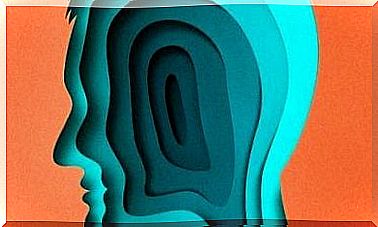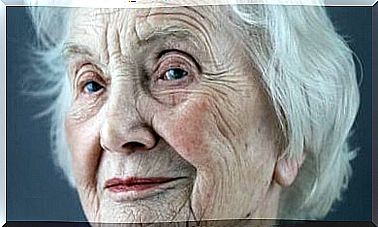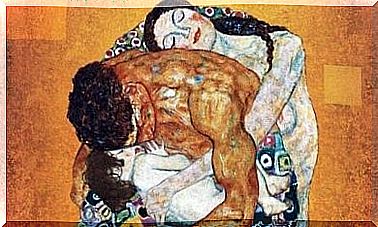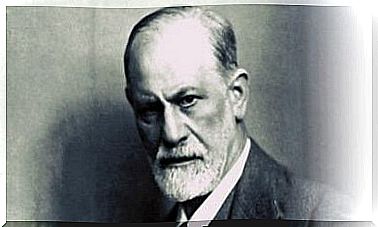Do You Know About Wernicke-Korsakoff Syndrome?

It is a fact that too much alcohol leads to disorders, either intense or chronic, in our central nervous system. This happens mostly in our brain; as with Wernicke-Korsakoff syndrome.
But no one knew about this until the 20th century. Even today, we do not know all the reasons why alcohol affects the brain the way it does.
Traditionally, people believed that the psychopathology of alcohol consisted only of direct, exclusive consequences of the substance on the central nervous system. After some time , we have seen the effect of excessive alcohol intake related to malnutrition.
There are crucial consequences when it comes to the occurrence of any of these disorders.
Now we are going to look at one of the most well known disorders caused by excessive alcohol consumption. Let’s talk about Wernike-Korsakoff syndrome.
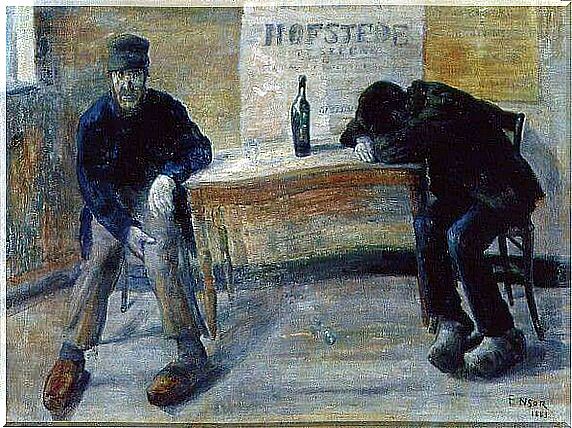
Wernicke-Korsakoff Syndrome
Wernicke’s encephalopathy and Korsakoff syndrome are two different conditions. But they often show up together.
When that happens, we’re talking about Wernicke-Korsakoff syndrome. As we will see, one of the causes is a deficiency of thiamine (vitamin B1).
A deficiency of vitamin B1 is common in people with alcoholism. But they are not the only ones who get it. It is also common in people where the body does not absorb food (malabsorption). This can happen as a result of a chronic illness or after a fat removal surgery.
Korsakoff syndrome, or psychosis, tends to develop after the symptoms of Wernicke syndrome disappear.
Wernicke’s encephalopathy causes brain damage in the lower parts of the brain, the thalamus and in the hypothalamus.
Korsakoff’s psychosis comes from a permanent damage to the parts of the brain associated with memory.
We need to look at Wernicke’s encephalopathy and Korsakoff’s amnesia syndrome. That way we can more easily understand what we are talking about.

Wernicke’s encephalopathy
Wernicke first explained this in 1885. It can be found in chronic alcoholics with nutritional deficiencies. With Wernicke’s encephalopathy we can see symmetry in the wounds on the brain structures around the third ventricle, the aqueduct and the fourth ventricle.
Specifically, these structures are corpus mamillare, thalamus, locus coeruleus, gray matter, oculomotor nucleus and vestibular nucleus.
In addition, 50% of cases that include ulcers on the cerebellum also contain loss of purkinje fibers. What is perhaps the most typical neurological sign of encephalopathy is the breakdown of the corpus mammilara. This is shown in about 80% of cases.
The symptoms of Wernicke’s encephalopathy
Clinically, patients are often confused and have problems with their attention. Many show low levels of awareness. Without treatment, this can lead to coma or death.
There are a few more symptoms that come with it. These are nystagmus (involuntary eye movements), ataxia (difficulty in coordination) and ophthalmoplegia (inability to move the eye). There is also a risk of ulcers on the ocular motor, abducens and the vestibular nuclei.

Causes of Wernicke’s encephalopathy
The etiology of the disorder comes from a deficiency of thiamine or vitamin B1, as mentioned earlier. Thiamine deficiency is common in people who frequently drink alcohol and who have developed some addiction.
Vitamin B1 deficiency in alcoholics occurs due to a combination of malnutrition, lower intestinal absorption of the vitamin and a reduction in the liver’s ability to store and use it. These factors all occur with chronic alcohol consumption.
Vitamin B1 deficiency can be both genetic or acquired. These differences may explain why not all alcoholics develop this type of encephalopathy.
Korsakoffs amnesia syndrome
The characteristics of this syndrome are severe deterioration in anterograde memory and retrograde memory (inability to learn new things and inability to remember what one has learned).
Apathy is also very common. But sensory and other intellectual abilities are the same.
Korsakoff’s amnesia syndrome goes hand in hand with Wernicke’s encephalopathy. It appears in 80% of patients who have recovered from encephalopathy.
But Korsakoff’s amnesia has also been discovered in people who have never had Wernicke’s encephalopathy.
It is unusual for non-alcoholic people who have had encephalopathy to develop Korsakoff’s syndrome. This means that the neurotoxicity of alcohol has a certain effect on what causes this syndrome.
Changes caused by Korsakoff’s syndrome
The neurons most affected by neurotoxicity are cholinergic neurons in the basal ganglia. These neurons appear in low numbers in Korsakoff’s patients.
Thiamine deficiency can also lead to loss of neurotransmitters, especially those stimulated by acetylcholine. Therefore, loss of this substance also leads to memory loss.
Wounds on the corpus mammary, thalamus, and outer nucleus can cause equally severe memory loss.
As we have seen, the differences between Korsakoff’s syndrome and Wernicke’s encephalopathy are not necessarily clear and exact. From a pathological point of view, there is a clear overlap of the areas affected by both syndromes.
Due to the lack of a clear line between the two diseases, several authors have suggested using the terminology “Wernicke-Korsakoff”.


